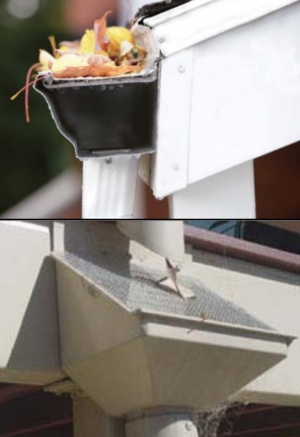Rain barrels
This article is about outdoor, residential systems. For larger, multi-residential or commercial integrated systems, see Rainwater Harvesting
Overview[edit]
Rain barrels are an above ground form of rainwater harvesting, typically used in residential settings. The precipitation flows from the roof, to the guttering and down the downspout before being diverted to the rain barrel for storage.
<textprimary>The fundamental components are: </textprimary>Rain barrels are an ideal technology for:
*Individual homes, where the owners can make good use of the water to irrigate a garden *Retrofitting single family home neighborhoods
*Areas with mandatory downspout disconnection programs
- -a catchment area where the rain lands, this will usually be a rooftop,
- -guttering and downspouts to channel the rainwater,
- -screens or filters to remove leaves and other large debris,
- - a rain barrel to hold the collected water.
<textprimary>Additional components may include:</textprimary>
- -a tap or faucet fitted to the barrel
- - a hose or other irrigation system.
Planning Considerations[edit]
Watershed scale
Traditional rain barrels require a high degree of owner compliance to perform as a reliable stormwater management control strategy at watershed scale. To overcome this limitation, electronically monitored and controlled rain barrels are a new adaptation on the market in Ontario[1]. This system forecasts rain and automatically discharges the contents of the rain barrel to a designated infiltration area of the property in advance of the storm.
Site Scale
Place in the Treatment Train
In most cases the catchment area will be the roof of the building and the rain barrel will be the first interception of water from the downspout.
How many downspouts does the roof have? Will more than one barrel be required? Do the downspouts require reconfiguration?
Cistern
Expansion caused by freezing water will damage the barrel. The easiest way to prevent this damage is to drain and disconnect the system in advance of sub-zero temperatures[2]. It is recommended that an overflow strategy be part of designing a rain barrel system. Excess water should be directed away from the property foundations. Suitable discharge points for overflow include: a rain garden, a french drain, or the base of a tree.
Design[edit]
Filter
The water in the barrel will remain fresher for use if leave litter is excluded. Leaves can be filtered out by a screen on top of the cistern, or by using a device fitted into the downspout.
Sizing Barrels
Roof catchment area can be estimated using one of many online digital maps. e.g. Distance can be measured on Google maps by right clicking on the desired start point.
1 mm of rain landing on 1 m2 of roof top produces 1 litre of water to store.
So a 5 mm storm on a 75 m2 roof would require 375 L of storage volume.
Rain barrels or cisterns are readily available in pre-formed plastic up to around 500L.
Alternatives include:
- modular systems to increase total storage capacity,
- slim designs to fit small spaces,
- aesthetic designs for high profile locations,
Many people choose to reuse or recycle a container as a rain barrel or cistern. Re-purposed containers should be screened to prevent mosquitoes from breeding, and should be opaque to prevent algae from growing.
Performance[edit]
CSA STANDARD !!!
Incentives and Credits[edit]
Region of Peel offers rain barrels for sale at their Community Recycling Centres[3].
